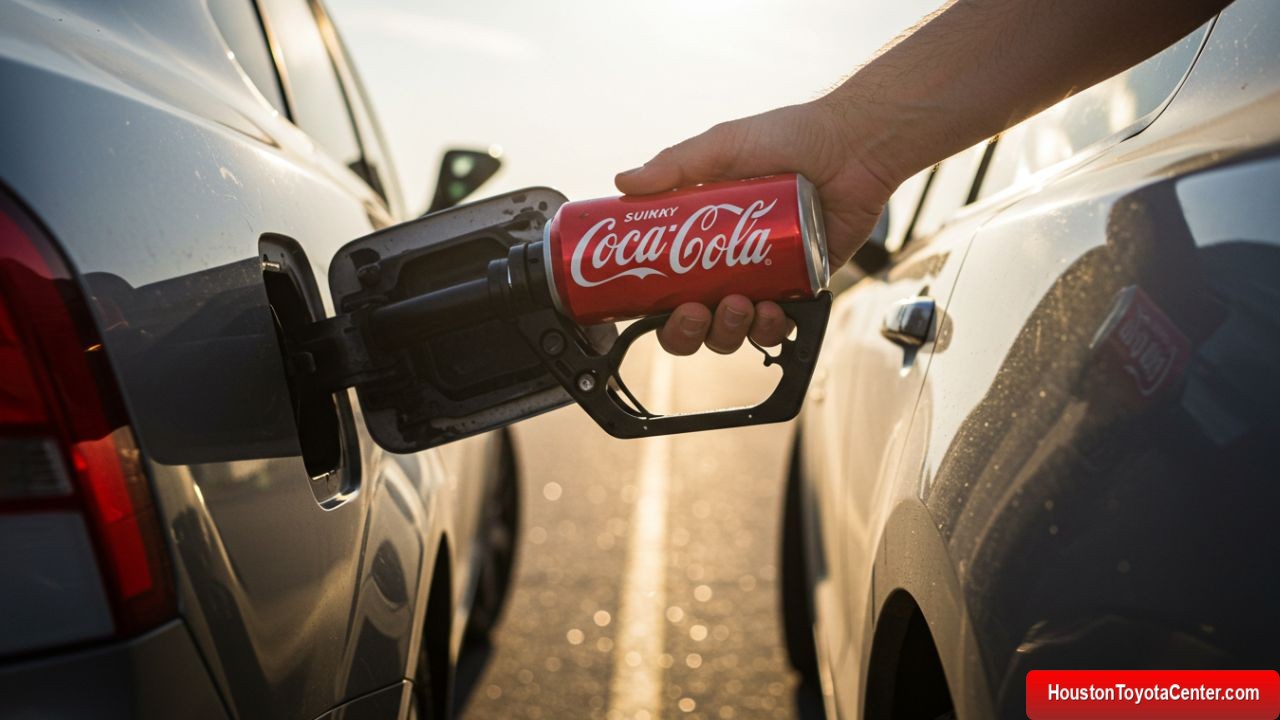For decades, urban legends and DIY hacks have circulated about unconventional uses for everyday products. One of the most bizarre claims? Pouring Coca-Cola into a car’s gas tank to “clean the engine” or “boost performance.” While the idea might sound like a quirky life hack, the reality is far more dramatic—and destructive. In this deep dive, we’ll explore the science, the myths, and the jaw-dropping consequences of using Coca-Cola as a fuel additive. Spoiler alert: Your car won’t thank you.
The Origins of the Myth: Why Would Anyone Try This?
Before dissecting the fallout, it’s worth understanding why this myth persists. Coca-Cola’s acidic properties and reputation as a household cleaner (e.g., removing rust or grease) have led some to believe it could “clean” a fuel system. Others claim it’s a prank, a last-ditch effort to sabotage a vehicle. But how did this idea gain traction?
- Cultural Folklore: Stories of using Coke to dissolve teeth or clean pennies have been exaggerated into automotive “advice.”
- Misinterpreted Science: The phosphoric acid in Coke can break down organic material, but fuel systems aren’t organic.
- Social Media Influence: Viral videos showcasing “experiments” often omit long-term consequences.
Breaking Down Coca-Cola: What’s Inside the Can?
To grasp why Coke and gasoline are a catastrophic mix, let’s analyze the soda’s ingredients:
| Ingredient | Purpose | Effect in Fuel System |
|---|---|---|
| Carbonated Water | Base liquid | Evaporates, leaving residue; may cause vapor lock. |
| High-Fructose Corn Syrup | Sweetener | Caramelizes under heat, clogging fuel lines. |
| Phosphoric Acid | Preservative/Flavor | Corrodes metal components (e.g., fuel pumps). |
| Caffeine | Flavor enhancer | No direct impact, but irrelevant to combustion. |
| Artificial Flavors | Taste | Unpredictable chemical reactions with gasoline. |
When introduced to a gas tank, these ingredients interact with gasoline and engine components in ways that defy their benign reputation.
FREE: Quickly identify and understand problems with your vehicle 🚘
CLICK HEREThe Chemical Apocalypse: Coke vs. Your Car’s Fuel System
Gasoline engines rely on precise fuel-air mixtures and spotless pathways to function. Introducing Coca-Cola disrupts this balance at every stage:
1. Fuel Line Clogging
The high sugar content in Coke doesn’t dissolve in gasoline. Instead, it caramelizes when exposed to heat, forming a sticky, viscous sludge. This gunk accumulates in fuel filters, injectors, and lines, starving the engine of fuel.
Real-World Example: A 2018 case study documented a Ford F-150 owner who added two liters of Coke to their tank. Within 50 miles, the truck stalled. Mechanics found the fuel filter resembled “black licorice,” requiring a full system flush and $1,200 in repairs.
2. Corrosion Catastrophe
Phosphoric acid, while effective at removing rust, is a double-edged sword. In a fuel tank, it attacks:
- Metal fuel pumps (common in older vehicles)
- Aluminum fuel rails
- Steel fuel lines
Over time, this corrosion leads to leaks, failures, and even fire hazards.
3. Combustion Chaos
Gasoline is refined to burn efficiently. Coke’s water content disrupts combustion, causing:
- Misfires: Water doesn’t compress, leading to engine knocking.
- Reduced Power: Incomplete burns sap performance.
- Catalytic Converter Damage: Unburned sugar coats the converter, overheating it.
Short-Term vs. Long-Term Damage: A Timeline of Disaster
Let’s visualize the fallout:
| Stage | Immediate Effects | Long-Term Consequences |
|---|---|---|
| 0-24 Hours | Engine sputtering, reduced MPG. | Sugar begins adhering to fuel filters. |
| 1-7 Days | Persistent misfires, check engine light. | Corrosion eats at metal components. |
| 1 Month+ | Complete fuel system blockage. | $3,000+ repairs: tank replacement, pumps, injectors. |
Debunking the Myths: Why Coke Doesn’t “Clean” Anything
Proponents of the myth argue that Coke’s acidity “cleans” the fuel tank. Let’s dismantle this:
- Myth: “It dissolves rust.”
Reality: While phosphoric acid can remove surface rust, fuel tanks are coated with anti-corrosion layers. Coke strips these coatings, accelerating rust. - Myth: “It’s cheaper than fuel additives.”
Reality: A 2Cokecouldleadtoa2Cokecouldleadtoa2,000 repair bill. Proper additives cost $10. - Myth: “It works in small doses.”
Reality: Even 12 ounces of Coke contains enough sugar to foul a fuel system.
The Verdict: What Should You Use Instead?
If you’re tempted to “clean” your fuel system, opt for these safe alternatives:
✅ Fuel System Cleaners: Products like Chevron Techron are designed to dissolve deposits.
✅ Ethanol-Free Gasoline: Reduces moisture buildup.
✅ Professional Service: Mechanics use ultrasonic cleaning for severe cases.
Final Thoughts: A Sticky Situation Avoided
Pouring Coca-Cola into your gas tank isn’t a hack—it’s highway robbery for your wallet. The combination of sugar, acid, and carbonation wreaks havoc on delicate components, turning a curious experiment into a financial nightmare. Next time you’re tempted to test a viral automotive “tip,” remember: Your car runs on gasoline, not sugar water.
🚗 Got Questions? Here’s a Quick FAQ
Q: What if I only put a little Coke in my tank?
A: Even a small amount can cause clogs. Don’t risk it.
Q: Can Coke damage electric vehicles?
A: EVs don’t have gas tanks, but please don’t pour soda into battery compartments.
Q: Are other sodas just as bad?
A: Yes! All sugary, acidic beverages harm fuel systems.
Q: How do I fix a Coke-damaged engine?
A: Drain the tank, replace filters, flush lines, and pray it’s not too late.


Leave a Reply